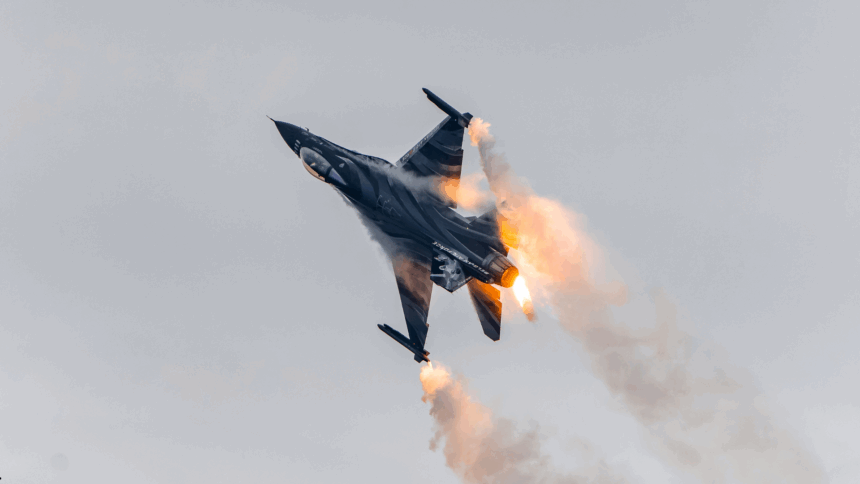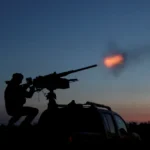Ukraine’s “Spider’s Web” Drone Operation Hits Russia’s Strategic Bombers
A massive escalation in drone warfare
Code-named “Spider’s web”, Ukraine’s large-scale drone assault on Russian military airbases marks a dramatic escalation in long-range warfare. Ukrainian security services revealed that the mission, launched on a Sunday, had been in development for over a year and a half and led to the destruction of nearly a third of Russia’s strategic bomber fleet. With damages estimated at $7 billion, the operation represents a turning point in the ongoing conflict.
Striking deep into Russian territory
The Ukrainian drones struck deep within Russian territory, thousands of kilometres from the front line, in what President Volodymyr Zelensky described as the country’s “most long-range operation” since the war began in 2022. The campaign targeted key Russian airbases using 117 drones in a coordinated and highly secretive effort.
Camouflaged drone deployment
Photos released by Ukrainian intelligence showed the drones camouflaged in wooden crates on trucks. These structures featured remotely operated roofs that opened to release the drones, allowing Ukraine to bypass conventional launch detection. Russian defence sources confirmed that drones were launched from inside the country, not across the border.
High-value aircraft reportedly hit
While independent verification remains elusive, Ukraine’s SBU said the strikes hit 41 aircraft used to bomb cities across Ukraine. The bombers included Tu-95 and Tu-22 aircraft, along with the A-50 airborne radar planes. Russian authorities admitted that aircraft at bases in Murmansk and Irkutsk were set ablaze but insisted the fires were controlled and caused no casualties.
Major damage to Russian air force
According to the SBU, the “Spider’s web” operation successfully destroyed 34% of Russia’s strategic bombers capable of launching cruise missiles. A source quoted by @FT said, “SBU drones are targeting aircraft that bomb Ukrainian cities every night.” The strikes are said to have inflicted approximately $7 billion in damages to Russia’s military infrastructure.
Complex intelligence and infiltration
The meticulous planning behind the strikes underscores a shift in Ukraine’s military strategy. Unlike previous drone attacks, which were typically launched from Ukrainian soil, these drones had been smuggled and stored in proximity to the target sites. The level of infiltration and logistical complexity suggests deep intelligence penetration into Russian territory.
Ukraine’s reach expands across Siberia
Zelensky praised the operation’s “brilliant results,” citing its long-range reach and military significance. The airbases targeted — Olenya in the Arctic and Belaya in eastern Siberia — are located as far as 4,300 kilometres from Ukrainian-controlled areas. This level of reach demonstrates a new phase in Ukraine’s ability to strike strategic Russian assets.
Additional drone strikes intercepted
Russia claimed it intercepted additional drones aimed at airbases in Ivanovo, Ryazan, and Amur. The latter is near the border with China, highlighting the breadth of Ukraine’s drone campaign. These countermeasures were said to prevent further destruction, but Ukrainian sources suggest otherwise.
Psychological impact and retaliation
The immediate military consequences remain uncertain. However, the psychological and symbolic effects are profound. Ukraine continues to face relentless air raids, which have taxed its air defence systems. The drone strikes serve both as retaliation and a message of resilience amid ongoing battlefield setbacks.
Russian military response and backlash
Russian military commentators have responded with alarm. Prominent Telegram channel Rybar referred to it as “a very heavy blow” and condemned what it described as “serious errors” by Russian intelligence. Other voices within the Russian military sphere called it a “black day for aviation.”
Timed before Istanbul peace talks
The timing of the attacks is equally significant. They occurred just as peace talks between Russia and Ukraine were set to begin in Istanbul. Former Ukrainian President Petro Poroshenko said, “There were no better arguments for Ukraine on the eve of talks with Moscow.” This sentiment captures the strategic messaging Ukraine hopes to send.
Redefining modern warfare
As the war enters its third year, the “Spider’s web” operation signals a recalibration of tactics by Kyiv. The use of smuggled drones, deep-strike capacity, and the destruction of high-value targets may redefine the rules of engagement moving forward. Ukraine’s message is clear: no corner of Russian territory is beyond reach.






